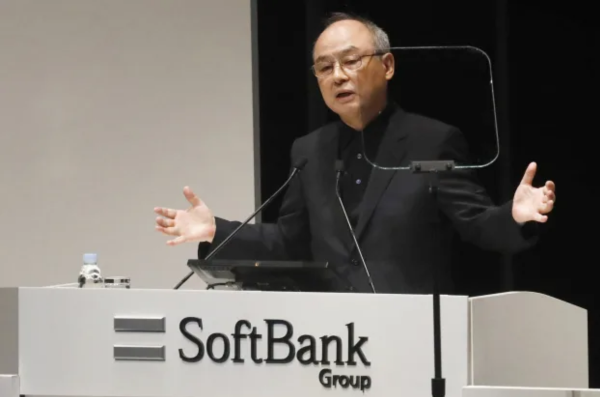David Sacks, the newly appointed White House “czar” for artificial intelligence (AI) and cryptocurrencies, recently addressed the regulatory landscape for NFTs and memecoins. According to Sacks, these digital assets are neither securities nor currencies but are better classified as “collectibles,” comparable to antique coins and stamps.
In an interview with Fox Business on Thursday, Sacks responded to questions regarding the status of NFTs and other cryptocurrencies. He explained:
“When you’re talking about digital assets, they can mean many things. You have digital assets that are securities, digital assets that are commodities, and digital assets that are collectibles like NFTs or memecoins. It’s a broad area of innovation.”
The Rise of NFTs and Memecoins: What Are They?
To fully understand the implications of Sacks’ remarks, it’s essential to break down what NFTs and memecoins are. Non-Fungible Tokens (NFTs) have become a sensation in the world of digital art, collectibles, and gaming. NFTs are unique digital assets stored on the blockchain, making them irreplaceable and easily verifiable. They can represent anything from digital art and music to virtual real estate in digital worlds.
Memecoins, on the other hand, are cryptocurrencies inspired by internet memes or jokes. They often have little to no practical use but generate interest and investment due to their humor or the communities that rally behind them. The most famous memecoin is Dogecoin, which started as a joke but has gained significant traction, with high-profile endorsements such as Elon Musk.
Despite their wildly different characteristics, NFTs and memecoins are often grouped together, as both are part of the broader digital assets ecosystem. The growth of these assets has sparked significant debate regarding how they should be regulated, leading to Sacks’ reclassification of them as collectibles.
Regulatory Implications
This classification as collectibles could redefine how NFTs and memecoins are viewed, potentially giving them cultural and economic legitimacy. By positioning them outside the scope of the U.S. Securities and Exchange Commission (SEC), they may avoid stricter regulatory oversight typically applied to securities.
Sacks’ remarks highlight a key shift in the perspective toward these assets, emphasizing their status as items of personal or cultural value rather than strictly financial instruments. This distinction could open doors for more mainstream acceptance and usage of NFTs and memecoins, potentially leading to increased participation from non-traditional investors who see these assets not solely as investments but as vehicles for self-expression or collecting.
When asked about the memecoin launched by Donald Trump prior to his presidency, known as TRUMP, Sacks reaffirmed his stance:
“I believe the Trump coin is a collectible item,” he stated, equating it with memorabilia like baseball cards or postage stamps.
Cultural and Economic Significance of NFTs and Memecoins
The categorization of NFTs and memecoins as collectibles is not merely a regulatory decision. It acknowledges the broader cultural and economic importance these assets have gained in recent years. NFTs have, for example, been at the forefront of digital art innovation, allowing artists to monetize their work in ways previously unavailable. Memecoins, while often dismissed as frivolous, have built robust communities that drive the hype and interest around them.
For many, owning an NFT or a memecoin is less about financial investment and more about ownership of something unique or culturally significant. For instance, individuals might purchase NFTs representing limited-edition digital art or items from their favorite games. Similarly, memecoins are often bought not with the expectation of financial returns but as a form of online camaraderie or shared joke within a community.
This mindset shift is crucial. As digital assets, particularly NFTs and memecoins, gain recognition as collectibles, it could pave the way for these items to gain acceptance as valid forms of personal expression and cultural currency. This reclassification could lead to greater acceptance of digital assets in everyday life, from art to entertainment to online social engagement.
Sacks’ Vision: Presidential Task Force on Digital Assets
Sacks also outlined his vision for the Presidential Task Force on Digital Asset Markets, which he chairs. This initiative is part of former President Donald Trump’s broader executive order to position the United States as a global leader in cryptocurrency innovation.
The task force’s mission includes establishing a comprehensive legal framework for digital assets. In collaboration with the SEC, the team aims to classify cryptocurrencies into distinct categories such as securities, commodities, or collectibles. This approach would ensure that each type of digital asset receives appropriate regulatory oversight based on its characteristics.
One of the central goals of this task force is to clarify the status of digital assets to reduce confusion and promote growth in the space. With clear, well-defined regulations, developers, investors, and other stakeholders could operate with greater confidence and security.
Criticism of Previous Administration
Sacks was critical of the previous Biden administration, accusing it of contributing to the regulatory uncertainty that has frustrated the crypto sector. He expressed frustration over the lack of clear guidelines during the previous administration, which he believes led to legal ambiguities and unnecessary lawsuits.
“The Biden administration wouldn’t provide clear rules, leaving companies to operate in ambiguity and face lawsuits. What the industry wants most is regulatory clarity,” Sacks concluded. This sentiment reflects the growing frustration in the digital asset space, where inconsistent regulations have made it difficult for companies to fully embrace innovation without fear of future legal challenges.
The Need for Clearer Guidelines: Regulatory Uncertainty and Legal Ambiguities
The regulatory landscape for digital assets has long been a point of contention. On one hand, the innovation in cryptocurrencies and blockchain technologies has pushed the boundaries of financial services, creating new opportunities for investors and businesses alike. On the other hand, the lack of clear and consistent regulations has led to confusion and a climate of legal uncertainty.
For businesses operating in the crypto space, regulatory uncertainty is a significant hurdle. Many companies have found themselves in limbo, unable to determine how to comply with existing laws or how to predict future regulations. Some have even faced lawsuits or enforcement actions, as they attempted to navigate the murky waters of digital asset regulation. Sacks’ comments on the previous administration’s failure to provide clear rules resonate with many in the crypto industry, who believe that the lack of clarity has hindered the sector’s growth and maturation.
NFTs and Memecoins – Moving Toward Clarity
The new task force under Sacks’ leadership aims to bring order to the digital asset market by addressing long-standing concerns about regulatory ambiguity. With clear guidelines, the industry could foster innovation while ensuring compliance with U.S. laws.
As NFTs and memecoins gain popularity, their recognition as collectibles may pave the way for a new era of digital ownership, combining cultural significance with regulatory structure. This shift could result in new opportunities for creators, collectors, and businesses to engage with these digital assets in ways that go beyond simple speculation.
The reclassification of NFTs and memecoins could also lead to new types of market exchanges and platforms tailored to collectibles, such as digital auction houses or NFT marketplaces with specialized services for those seeking to acquire unique or historically significant items. With regulatory clarity, the market may mature into a more sustainable and innovative space, where digital assets are treated as valuable, tradable goods rather than speculative tools.
NFTs and Memecoins in the Digital Economy
The role of NFTs and memecoins in the broader digital economy is still evolving. As the digital world becomes increasingly interconnected, digital assets like NFTs and memecoins could become integral components of our online identities and the economies built around them. The recognition of these assets as collectibles would not only legitimize them in the eyes of regulators but could also establish them as crucial elements in the development of the metaverse—a virtual environment where digital ownership and digital currency will likely play a central role.
Furthermore, the implications of NFTs and memecoins go beyond individual use cases. Companies, artists, and creators are leveraging these digital assets in innovative ways to interact with audiences. NFTs are already used in marketing campaigns, virtual concerts, and even as proof of membership in exclusive online communities. The demand for unique, verifiable digital items has fueled the growth of these markets, with companies like Adidas, Nike, and Coca-Cola launching their own NFT collections.
Similarly, memecoins have found a place within the wider culture. Originally viewed as a novelty or joke, they have now amassed large communities of passionate supporters. For some investors, buying memecoins is an opportunity to align with the cultural movements or internet communities they support. It’s a way of participating in an evolving digital economy while also engaging in the online culture that drives it.
The Future of Digital Assets
As the industry waits for official guidelines to be established, one thing is clear: the digital assets landscape is on the brink of a transformative shift, one that could significantly influence the future of both the cryptocurrency and collectibles markets. The leadership of the Presidential Task Force could be a pivotal factor in shaping how NFTs, memecoins, and other digital assets evolve in the coming years.
For authoritative information about the regulatory landscape of digital assets, including NFTs, memecoins, and cryptocurrencies, I recommend referring to CoinDesk. CoinDesk is a highly respected news outlet within the cryptocurrency and blockchain industry. It frequently publishes articles from experts on regulatory changes, insights into digital assets, and developments surrounding government initiatives like those mentioned in your article.
This site will offer comprehensive and up-to-date content on the evolving regulatory environment for cryptocurrencies and other digital assets.




One thought on “New U.S. Crypto Czar Declares NFTs and Memecoins Are Not Securities”